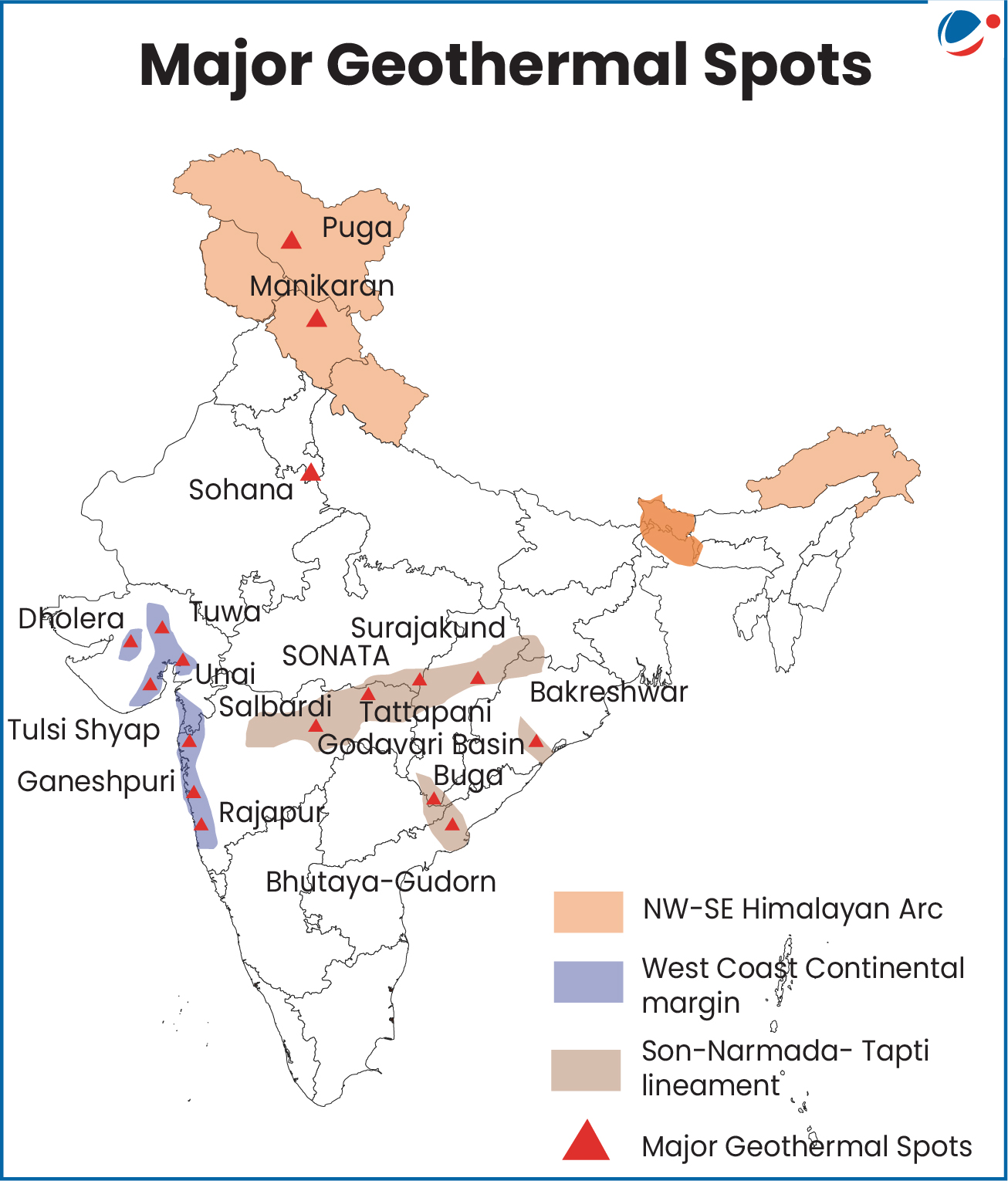The policy aims to promote scientific and technological research to explore and develop economically and environmentally viable geothermal resources.
Geothermal Energy

- It refers to the thermal (heat) energy derived from the Earth's subsurface.
- This energy is partly residual heat generated during Earth’s formation and partly from continuous and spontaneous radioactive decay of naturally occurring isotopes within the Earth’s core and mantle.
- This energy can be extracted using geothermal technology for heating and cooling, electricity generation and energy storage.
- Conventional Geothermal Technologies exploit hydrothermal reservoirs where geothermal heat is carried to the surface by naturally occurring subsurface fluids.
- Next-Generation Geothermal Technologies harvest heat at greater depths by circulating a fluid from the surface through engineered systems and are hydrothermal reservoir independent.
- These Include Enhanced Geothermal Systems (EGSs) and Closed-Loop Geothermal Systems (CLGSs).
- Potential in India: Geothermal Atlas of India, 2022, estimates a potential of about 10,600 MW.
- Puga and Chumathang in Ladakh are most promising geothermal fields in India.
- Benefits: Around the clock electricity generation, high utilization rate (over 75% in 2023), low emissions etc.
- Challenges: Relatively high technology cost, limited R&D, environmental concerns, licensing processes etc.
India's initiatives
|



